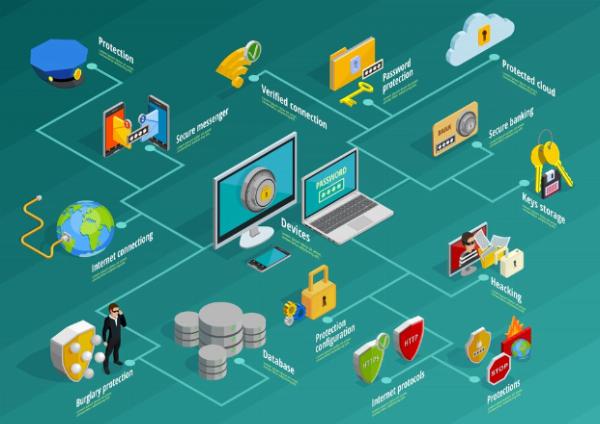 Schema + Rich Snippets – Dominate Search with Visual Results!
Schema + Rich Snippets – Dominate Search with Visual Results!
AR in Education: A Game Changer for Immersive Learning
Written by tracey » Updated on: June 17th, 2025

Augmented Reality (AR) has become a buzzword in recent years, transcending industries from entertainment to healthcare. However, one of the most promising areas where AR is making significant strides is in education. Augmented reality in education is revolutionizing the learning experience, turning traditional methods into interactive and engaging processes. This technological advancement is not just a fleeting trend but a fundamental shift in how we perceive and deliver education.
This article explores how AR is reshaping the educational landscape, its benefits, challenges, and future potential. By understanding the transformative power of augmented reality education, we can better appreciate why it is becoming a game changer for immersive learning.
What is Augmented Reality?
Before diving into its application in education, it’s essential to understand what augmented reality is. AR is a technology that overlays digital information—such as images, sounds, or other data—onto the real world, typically through the use of smartphones, tablets, or specialized AR glasses. Unlike Virtual Reality (VR), which creates a completely immersive digital environment, AR in Education enhances the real world by adding interactive digital elements to it.
In the context of education, AR transforms learning materials, such as textbooks or classroom environments, into interactive experiences that help students better understand complex concepts. Instead of passively reading or listening, students can interact with AR content, bringing theoretical concepts to life.
How AR is Transforming Education
Augmented reality in education is transforming both teaching and learning in several powerful ways:
1. Enhancing Engagement and Interaction
One of the most notable benefits of AR in education is the way it boosts student engagement. Traditional methods of education often rely on textbooks and lectures, which can sometimes feel dry or monotonous, especially for younger students. AR, however, offers a more interactive experience. For example, instead of simply reading about ancient civilizations in a history book, students can use AR to visualize historical landmarks and artifacts, allowing them to explore these elements in 3D.
This level of engagement promotes active learning, which is more effective than passive consumption of information. It has been shown that students are more likely to retain information when they are actively involved in the learning process. AR makes learning more dynamic, turning abstract concepts into tangible experiences.
2. Visualizing Complex Concepts
Subjects like physics, chemistry, biology, and mathematics often involve complex concepts that are challenging for students to grasp using traditional methods. Augmented reality education allows students to visualize these complex ideas in a more digestible format. For instance, instead of merely reading about the structure of a molecule, students can use AR to interact with a 3D model of the molecule, seeing how different atoms connect and behave.
In the case of geometry, AR can help students manipulate shapes and objects, providing them with a hands-on understanding of how geometric principles work in the real world. By offering students a visual and interactive representation of abstract concepts, AR makes it easier for them to comprehend and retain what they are learning.
3. Encouraging Experiential Learning
Experiential learning—learning by doing—is one of the most effective ways to teach students. Augmented reality education is particularly well-suited for experiential learning because it allows students to engage with materials in ways that traditional methods do not.
In a medical school setting, for example, students can use AR to study human anatomy by overlaying digital models of the human body onto their physical environment. They can explore different systems, like the skeletal or circulatory system, in a way that is both interactive and comprehensive. Similarly, AR can be used in engineering programs to allow students to virtually assemble or disassemble machinery, providing hands-on experience without the need for expensive or cumbersome physical models.
4. Bridging the Gap Between Theory and Practice
One of the significant challenges in education is helping students apply theoretical knowledge in real-world scenarios. AR helps bridge this gap by offering simulations that replicate real-life experiences. For instance, in vocational training programs, AR can simulate complex tasks like operating machinery, fixing engines, or even performing surgery. These simulations give students the opportunity to practice and hone their skills in a risk-free environment, preparing them for real-world challenges.
In subjects like environmental science, AR can be used to simulate ecosystems, allowing students to observe the effects of pollution, deforestation, or climate change without leaving the classroom. This not only enhances their understanding of the subject matter but also fosters a sense of responsibility and stewardship for the environment.
5. Personalizing the Learning Experience
One of the most exciting aspects of augmented reality education is its potential for personalized learning. Every student has a unique learning style and pace. AR can be tailored to meet the needs of individual students, providing customized experiences that cater to different learning preferences.
For example, students who learn best through visual aids can benefit from AR’s ability to present information in a highly visual format, while those who prefer hands-on learning can engage with interactive elements. By offering personalized learning paths, AR ensures that each student can learn in the way that suits them best, leading to improved academic performance and a more enjoyable learning experience.
Benefits of Augmented Reality in Education
The application of augmented reality in education comes with several notable benefits, including:
Improved Retention: Studies have shown that interactive learning methods, such as those provided by AR, result in better retention rates. Students who are actively engaged with the material are more likely to remember and apply what they have learned.
Increased Motivation: AR makes learning fun and engaging, which can lead to increased motivation. When students are excited about the learning process, they are more likely to participate actively and put in the effort to understand the material.
Collaboration and Teamwork: AR can be used to create collaborative learning experiences, encouraging students to work together to solve problems or explore concepts. This fosters teamwork and communication skills, which are critical in today’s workforce.
Inclusivity: AR can make education more inclusive by providing alternative ways for students with different learning needs or disabilities to engage with the material. For instance, AR can provide visual or auditory aids for students who struggle with traditional learning methods.
Global Access to Resources: With AR, students from all over the world can access high-quality educational content, regardless of their location. This helps bridge the gap between students in resource-rich and resource-poor environments, offering equal opportunities for learning.
Challenges and Limitations
While AR offers many benefits, it is not without its challenges. Some of the key obstacles include:
Cost: Implementing AR technology can be expensive, especially for schools or institutions with limited budgets. The cost of AR devices, software, and training can be prohibitive for many educational institutions.
Technical Issues: AR technology is still in its early stages, and technical glitches or software limitations can hamper the learning experience. Inadequate access to high-quality AR tools may limit the effectiveness of this technology in classrooms.
Teacher Training: Integrating AR into education requires teachers to be well-versed in the technology. However, many educators may lack the training or confidence to incorporate AR into their lessons, leading to underutilization.
Equity and Access: Not all students have access to the necessary devices, such as smartphones, tablets, or AR glasses, to participate in AR learning. This can exacerbate educational inequalities, particularly in underprivileged areas.
The Future of AR in Education
Despite the challenges, the future of augmented reality education looks promising. As technology continues to evolve, AR is expected to become more accessible and affordable. Companies and educational institutions are already investing in AR-based educational platforms and tools, which are likely to become even more sophisticated in the coming years.
In the long term, AR has the potential to create entirely new learning environments where students can interact with virtual elements as part of their daily education. This could include everything from virtual field trips to simulations of historical events, offering students a deeper and more immersive understanding of the world around them.
Conclusion
Augmented reality education is truly a game changer for immersive learning. By enhancing engagement, visualizing complex concepts, promoting experiential learning, and personalizing the educational experience, AR is transforming how students learn and how teachers teach. While there are challenges to overcome, the benefits far outweigh the limitations, and the future of AR in education is bright.
As AR continues to evolve, it will undoubtedly play an increasingly important role in shaping the future of education, making learning more engaging, accessible, and effective for students around the world.
Note: IndiBlogHub features both user-submitted and editorial content. We do not verify third-party contributions. Read our Disclaimer and Privacy Policyfor details.
Copyright © 2019-2025 IndiBlogHub.com. All rights reserved. Hosted on DigitalOcean for fast, reliable performance.














